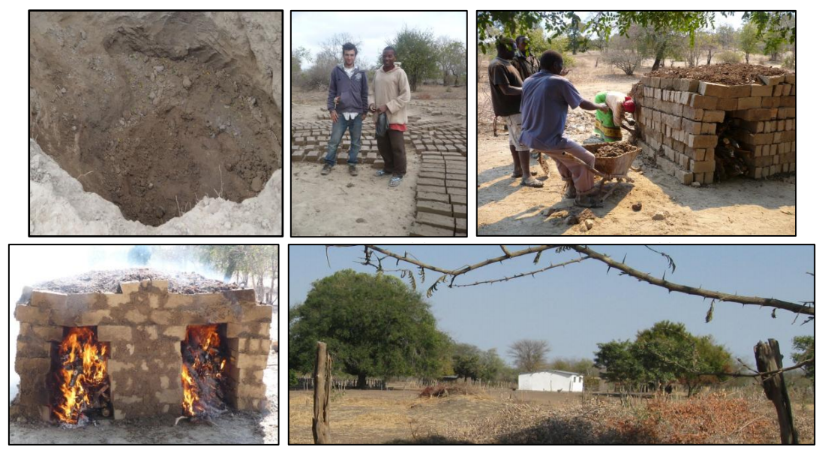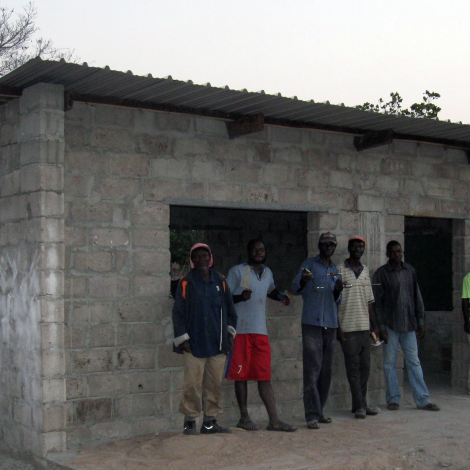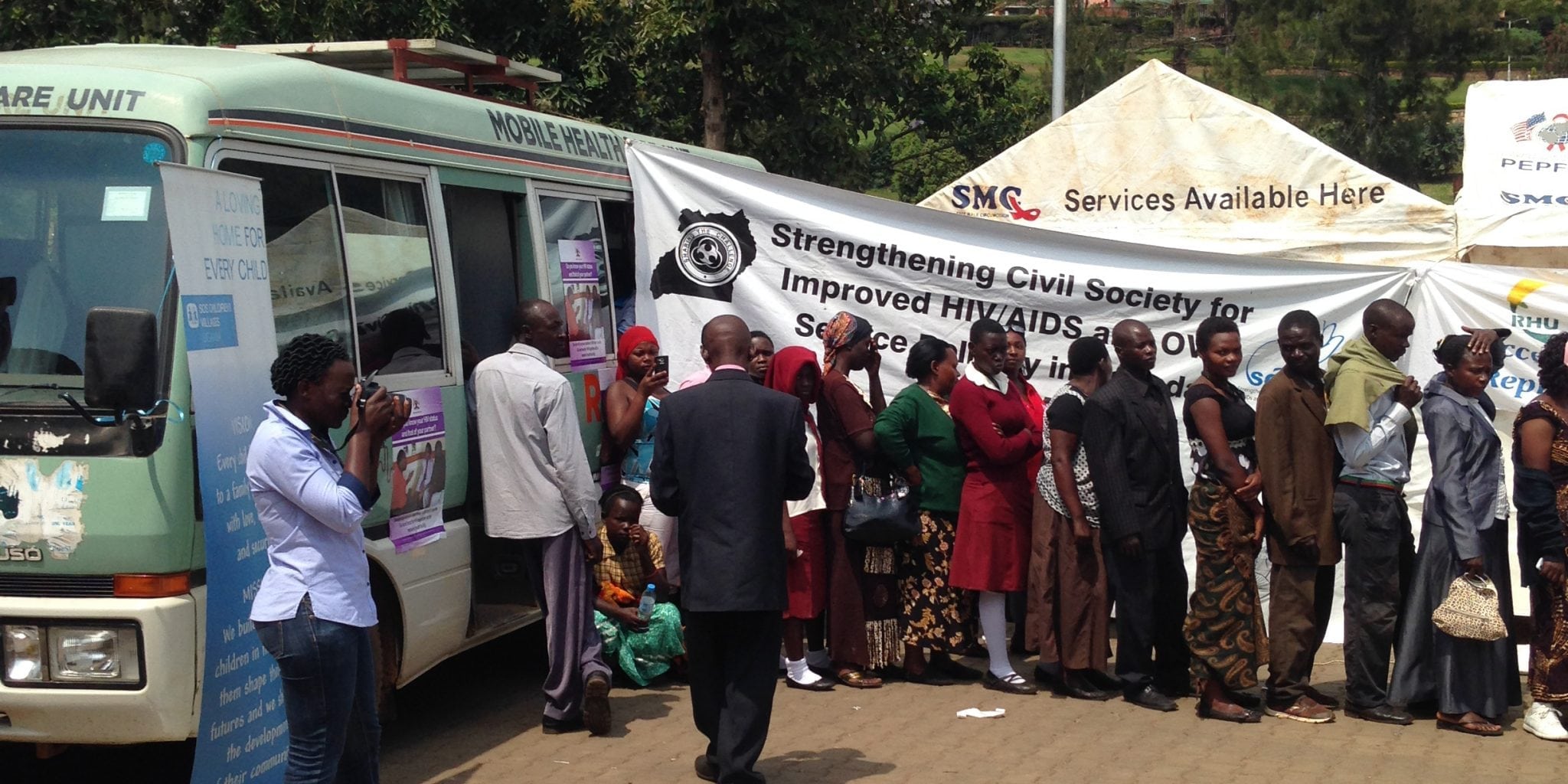Curious to learn how a health center turns into an animal barn? I saw the transformation firsthand while developing a project in rural Mozambique. The key takeaway was that communication with the community throughout the whole process – from fundraising to design, implementation and maintenance – is crucial to achieve sustainable project outcomes.
Where water is nearly as scarce as electricity
While studying mechanical engineering at the University of Porto in Portugal, I worked with the volunteer organization EpDAH (Engineering for Development and Humanitarian Assistance).
In 2010, two years after its launch, EpDAH took a first field trip to Malonguete, a rural village 90km northeast of Chicualacuala in Mozambique. The mission was to build a small health center. The town had no electricity and water was scarce, setting conditions for a potential food crisis. Also, there was no established network of health assistance. The national government allocated teachers to this area and classes were held in buildings shared by cattle and kids. Other EpDAH projects were the restoration of Macia’s orphanage and the construction of a small classroom in Malonguete.
How did EpDAH operate? How was the community organized?
In Malonguete, the community was divided into sections. The community assembly decided that each section would send a team of women and men to work on a rotating basis assuring that all sections contributed to community projects. Lunch was organized as follows: EpDAH’s volunteers would provide the corn flour for the xima, while the community would bring the side, a caril. Despite language barriers, this model allowed closer interaction between volunteers and community members.

Xima corn flour balls on the left are a traditional dish in Mozambique, and the caril on the right can be any side containing meat, fish, and/or veggies. Photo: screenshot of a tweet by @muana_mbuzi
Return to Malonguete
Following the construction of the health center in 2010, I joined a field trip in 2012 with two other volunteers. We stayed in remote Malonguete for three weeks. The goal was to assist with rebuilding the classroom and to install a solar panel in the health center.
Why did the classroom need restoration?
Aiming to reduce costs and ease maintenance, the classroom had been built with local timber in 2011. The unexpected outcome was the appearance of termites in the timber, and the disappearance of the roof to strong seasonal winds. Also, as temperatures were too high inside the classroom, the community suggested raising the height of the building. It was finally rebuilt with cement due to lack of funds.
Why was the health center used as a barn?
When we arrived, we found that the health center that EpDAH volunteers had helped build was in use. Not by people, however, but instead as an animal barn. In addition, we couldn’t take the solar panel to Malonguete. It had been donated and shipped to Mozambique, but was trapped in customs, so despite there being an electrical installation, nothing got improved in the health center in 2012. It is uncertain why the community didn’t use this building for its original purposes.

Volunteers and community members manufacture adobe bricks (first 4 photos). The health center is shown in the last photo. Photos supplied by the author
What are the key lessons learned?
Six lessons I learned may be of service to others working in global development engineering. I have illustrated the lessons with examples from Malonguete, but the spirit of each may apply more broadly to other projects in other regions.
- Users must be at the center of the design process and their knowledge must be incorporated in the solution. Could the incident of the disappearing roof have been avoided if volunteers had known about the strong wind season in Malonguete? What is the community’s opinion about adobe? Is it perceived to be hygienic?
- Language barriers are a challenge. Whenever possible, translators and multicultural teams should be present.
- Don’t assume to be the savior. This was the first time I ever actually got to build something. I learned about how to do it, but I also started to realize how complex the whole setting in Malonguete is, and therefore, how complex global development can be;
- Implementing the solution isn’t the end of the project; M&E processes and local partnerships are essential. Why was the health center being used as a barn? How can the feedback of the teachers, students and other community members be incorporated in the improvement of the solution? Cooperation with volunteer students at Eduardo Mondlane University now allows regular presence and assistance in Malonguete.
- Users must receive maintenance training. What would happen if there was a malfunction in the electrical system? Should the community wait for one year when volunteers can come to solve it?
- Transparency and the communication of both successes and failures is essential. A continuous improvement mindset should be present from the start. Process transparency and involvement of the community is crucial for building trust and managing users’ expectations. Was the timeline of the projects clear? Did the community get involved in the funding processes and know how the resources were collected? Was the customs incident communicated clearly to the community? How did it impact trust between EpDAH and the community?
About the Author
Teresa was an E4C Research Fellow in 2020 and comes from Porto, Portugal, where she graduated in mechanical engineering from FEUP. She is passionate global development and the achievement of the Sustainable Development Goals, and has engaged in volunteering programs in many domains from early age. Nowadays, she works in quality assurance and analytics of digital products and services for the public sector.

